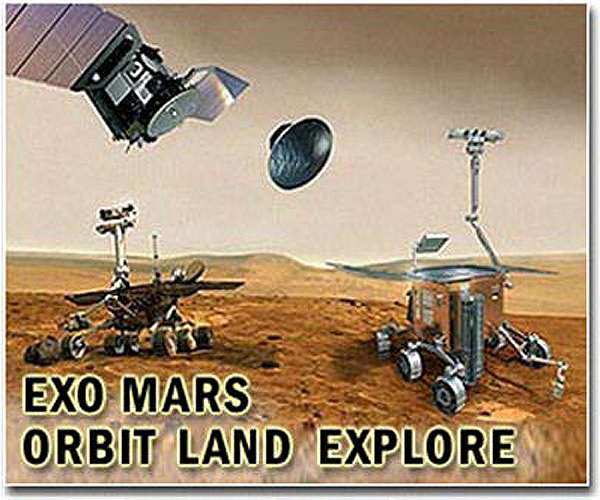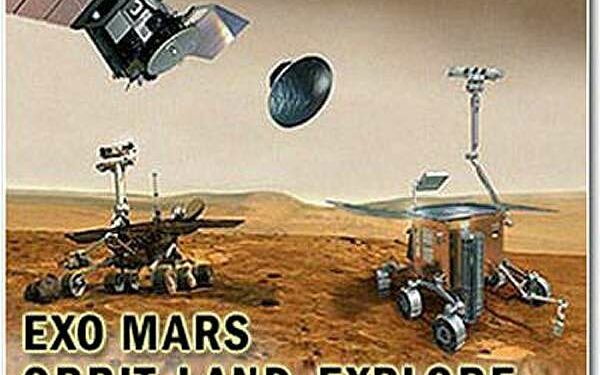
Martian Atmosphere Unveiled Through Innovative Use of Existing Technology
by Sophie Jenkins
London, UK (SPX) Jul 09, 2024
An antenna on ExoMars’ Trace Gas Orbiter has been repurposed to help researchers explore new areas of the Martian atmosphere.
Using this modified equipment, a team including researchers from Imperial College London has investigated previously unreachable regions of Mars’ atmosphere. These areas, which can obstruct radio signals, are vital for future Mars habitation missions.
The analysis of the first 83 measurements, conducted by researchers at Imperial and their European Space Agency (ESA) colleagues, is published in the journal Radio Science.
The ExoMars Trace Gas Orbiter (TGO) collaborated with another ESA spacecraft, Mars Express (MEX), to carry out this research. The two spacecraft maintain a radio link, allowing radio waves to penetrate the deeper layers of Mars’ atmosphere as one spacecraft moves behind the planet.
Changes in the atmosphere’s refractivity, which affects how radio waves bend, cause minor shifts in the radio frequencies received by the spacecraft. By examining these shifts, scientists can determine the density of the lower atmosphere and the electron density in the ionosphere, a charged layer of the upper atmosphere. This method is known as mutual radio occultation.
Jacob Parrott, a PhD student from the Department of Physics at Imperial and lead author of the study, explained, “The systems on MEX and TGO were not initially designed to do this – the radio antennas we used were made for communication between orbiters and rovers on the planet’s surface. We had to reprogramme them whilst inflight to carry out this new science.
“This innovative technique is likely to be a game-changer for future missions, proving that mutual radio occultation between two orbiting spacecraft is an economical way to extract more scientific value from existing equipment.”
Previously, radio occultation was conducted using the radio link from a Mars orbiter to large ground stations on Earth. This involved monitoring the radio signal as the spacecraft moved behind Mars, causing the signal to pass through the planet’s atmospheric layers.
Using two orbiting spacecraft for this measurement is already common for investigating Earth’s atmosphere. Thousands of such measurements occur between global navigation satellites, providing data used for atmospheric monitoring and weather prediction.
However, this method had only been used on Mars three times before; by NASA in 2007 as a hardware demonstration. The new application by the two ESA spacecraft marks the first routine use of this technique on another planet.
With the method now proven viable, scientists and engineers are exploring its potential for future Mars missions.
Dr. Colin Wilson, Project Scientist for the ExoMars Trace Gas Orbiter and Mars Express at ESA, stated, “ESA has now demonstrated the viability of this technique, which could be transformational for Mars science in the future. There are currently seven spacecraft orbiting Mars; as the number of spacecraft increases, as it will in coming decades, the number of radio occultation opportunities increases rapidly. Therefore, this technique will be an increasingly important tool for studying Mars.”
Spacecraft-to-spacecraft occultation allows more measurements and enables exploration of new atmospheric regions.
Traditional radio occultation measurements on Mars require a link to a ground station on Earth, which fixes the measurement location relative to Earth’s slow movement. This makes it challenging to capture global changes on Mars, as the same spots are often observed. Additionally, this method can only sample near sunset and sunrise due to Earth’s proximity to the Sun, limiting views of Mars’ atmosphere.
Traditional radio occultation also suffers from ‘occultation seasons’, where measurements are possible only for a few months each year due to the spacecraft’s orbit. For example, Mars Express could perform radio occultation for only two months in 2022.
Mutual radio occultation overcomes these limitations, allowing researchers to explore the entire depth of Mars’ ionosphere around noon and midnight for the first time.
Research Report:First Results of Mars Express – ExoMars Trace Gas Orbiter Mutual Radio Occultation
Related Links
Imperial College London
Mars News and Information at MarsDaily.com
Lunar Dreams and more




















